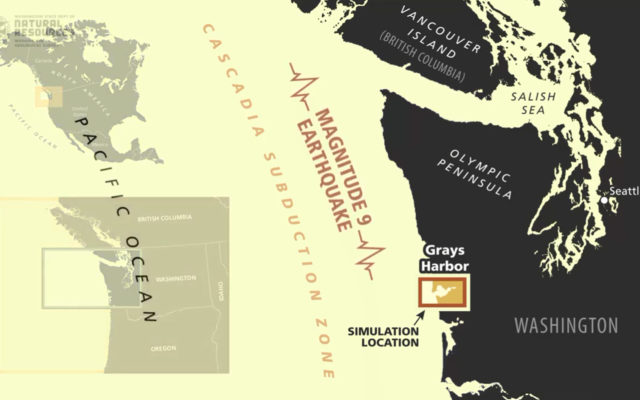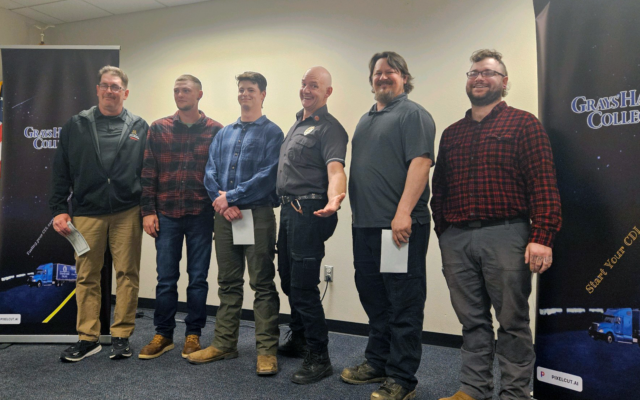New simulations show impact of Coastal WA tsunami

The Washington State Department of Natural Resources (DNR) have released a series of tsunami simulations that show the impact of a Cascadia Subduction Zone earthquake on Grays Harbor and Willapa Bay.
The simulations are designed to help communities along Washington’s coast visualize and prepare for the next tsunami.
Using detailed tsunami models, geologists at DNR, home to the Washington Geological Survey, produced simulations that show the estimated height and speed of waves that would strike the southwest Washington coast following a magnitude 9.0 earthquake on the Cascadia subduction zone.
The Cascadia Subduction Zone runs along almost the entire west coast, from British Columbia to California. The last magnitude 9 Cascadia subduction zone earthquake struck in 1700 and produced a tsunami that left sand deposits and drowned forests, which can still be seen in places like the Copalis Ghost Forest in Grays Harbor County.
The geologic record shows the Cascadia subduction zone – the offshore area where the Juan de Fuca tectonic plate pushes under the larger North American plate – produces megathrust quakes every 300 to 600 years. There have been about 40 earthquakes on the subduction zone in the last 10,000 years.
These simulations are designed to give emergency planners and communities the best possible visualized information about tsunami impacts and timing so they can plan accordingly.
“Tsunamis have struck Washington’s coast many times over our geologic history. It’s a question of when, not if, the next one will hit,” said Commissioner of Public Lands Hilary Franz. “These videos are designed to give the communities that would be most impacted by tsunamis a visualization of what areas are likely to face the most damage so they can make sure their residents, businesses and institutions are secure and resilient.”
The videos show Cascadia tsunami wave simulations for the southwest Washington coast, with detailed, localized impacts shown for Grays Harbor and the Long Beach Peninsula.
Tsunami wave simulation for Grays Harbor, Wash.
Tsunami current velocity simulation for Grays Harbor, Wash.
Tsunami wave simulation for Willapa Bay, Wash.
Tsunami wave simulation for northern Willapa Bay, Wash.
Tsunami wave simulation for southern Willapa Bay, Wash.
Tsunami current velocity simulation for Willapa Bay, Wash.
Tsunami wave simulation for Washington State
DNR has produced static tsunami hazard maps for the area that show maximum inundation, these simulations demonstrate how the tsunami wave heights change throughout the entirety of the tsunami event, increasing and decreasing over a span of many hours.
These simulation videos add to the agency’s work to provide this information to Washington’s communities. They join simulations produced last year for the broader Washington coast and localized simulations for the San Juan Islands and Bellingham/Anacortes areas.
All these simulation videos are available on DNR’s YouTube channel at: https://www.youtube.com/playlist?list=PLKpn_ilWjh51SEKRBO9mFJx688fjzYkJm
More is available on the DNR tsunami web page at: https://www.dnr.wa.gov/programs-and-services/geology/geologic-hazards/Tsunamis#tsunami-simulation-videos
More detailed maps of tsunami hazards, along with evacuation maps, preparation tips and additional information about these simulations are available online at https://www.dnr.wa.gov/tsunami



